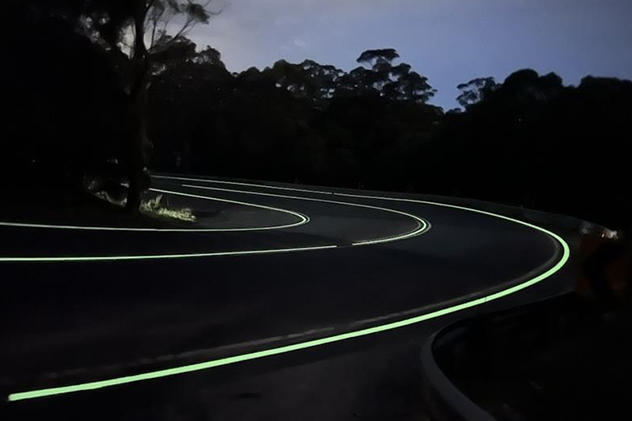
Key Points
A trial of innovative glow in the dark line markings on a notorious stretch of the Princes Highway has been hailed a success, with Transport for NSW reportedly considering expanding the technology to other high-risk roads across the state.
The photoluminescent road markings, which absorb and store light during the day and emit a glow at night, were installed on a 200-metre section of Bulli Pass in Bulli, south of Sydney.
The steep descent, known for its tight hairpin turn, was selected after data showed 125 near misses in a 12-month period, with 10 per cent occurring at night — nearly double the state average for regional roads.

“‘Glow Roads’ are designed to improve road safety at night and in poor weather by helping make line markings stand out,” a Transport for NSW spokesperson told Open Road. “They offer an extra safety option where street lighting may not be practical.”
The six-month trial began in December 2024 and concluded on July 16, 2025. Transport for NSW confirmed the glow roads led to a 67 per cent drop in nighttime near misses, highlighting the safety potential of the technology.
“Near-miss data from hairpin bend on the road indicates actual incidents fell by nearly a third to from 52 to 37 over the six months between December and May compared to the same time 2024,” a Transport for NSW spokesperson confirmed. “Adjusted data of nighttime near misses shows a 67 per cent drop over the six month comparison.
As well as road markings, the trial also included four ‘Glow Signs’ which were installed on the corner of the Bulli Pass.
A survey conducted by Transport for NSW as part of the trial found 83 per cent of drivers reported “increased peace of mind” while navigating the tricky downhill section at night.
“Community feedback to Transport on the Glow Roads brightness, line visibility and increased awareness of the upcoming bend have been mostly positive,” said a Transport for NSW spokesperson. “The benefit of the glow was greatest in improving visibility beyond the range of vehicle headlights – increasing the visibility of the lines on the bend to just below daylight detectability when the glow was fully charged.”
With over one-third of crashes in NSW occurring at night, and 70 per cent of road deaths happening in regional areas, authorities are now assessing other hazardous road corridors for the technology’s rollout.
“Based on the trial’s early success, Transport is now reviewing additional sites that could benefit from this innovative treatment,” said Transport for NSW.
Glow in the dark line markings have been trialled in Australia previously, with Victoria taking a similar approach in 2022 with limited success on a 1km section Metong Road in the state’s south east.
International interest in the technology is also growing, with the UK, Ireland and the Netherlands also considering or trialling similar systems.